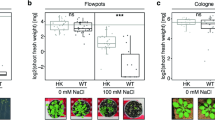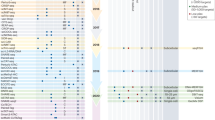Abstract
THE importance of trichloracetic acid as an agent for the removal of nucleic acids from their combination in nucleoproteins has been amply demonstrated by Schneider1. The method is now widely used by various authors in different cytochemical procedures. In order to find out whether any differential reactivity of the chromosome parts—namely, euchromatin and heterochromatin—with fuchsin sulphurous acid appears after such treatment, experiments were carried out, mainly on root-tips of Allium cepa and Hordeum vulgare. A series of different concentrations of trichloracetic acid was prepared and the root-tips treated under different conditions.
This is a preview of subscription content, access via your institution
Access options
Subscribe to this journal
Receive 51 print issues and online access
$199.00 per year
only $3.90 per issue
Buy this article
- Purchase on Springer Link
- Instant access to full article PDF
Prices may be subject to local taxes which are calculated during checkout
Similar content being viewed by others
References
Schneider, W. C., J. Biol. Chem., 161, 293 (1945).
Levan, A., Hereditas, 32, 449 (1946).
Feulgen, R., and Rossenbeck, H., Z. physiol. Chem., 135, 203 (1924).
Overend, W. G., and Stacey, M., Nature, 163, 538 (1949).
Author information
Authors and Affiliations
Rights and permissions
About this article
Cite this article
SHARMA, A. Trichloracetic Acid and Feulgen Staining. Nature 167, 441–442 (1951). https://doi.org/10.1038/167441b0
Issue Date:
DOI: https://doi.org/10.1038/167441b0
This article is cited by
-
A new online database on genome-related information of Indian plants
Plant Systematics and Evolution (2019)
-
Recent advances in the study of chromosome structure
The Botanical Review (1958)
-
An investigation of the possibilities of the use of phenols in chromosome analysis
Genetica (1957)
-
Fixation of plant chromosomes
The Botanical Review (1956)
-
Effect of Trichloracetic Acid on Nuclear Proteins
Nature (1952)
Comments
By submitting a comment you agree to abide by our Terms and Community Guidelines. If you find something abusive or that does not comply with our terms or guidelines please flag it as inappropriate.



